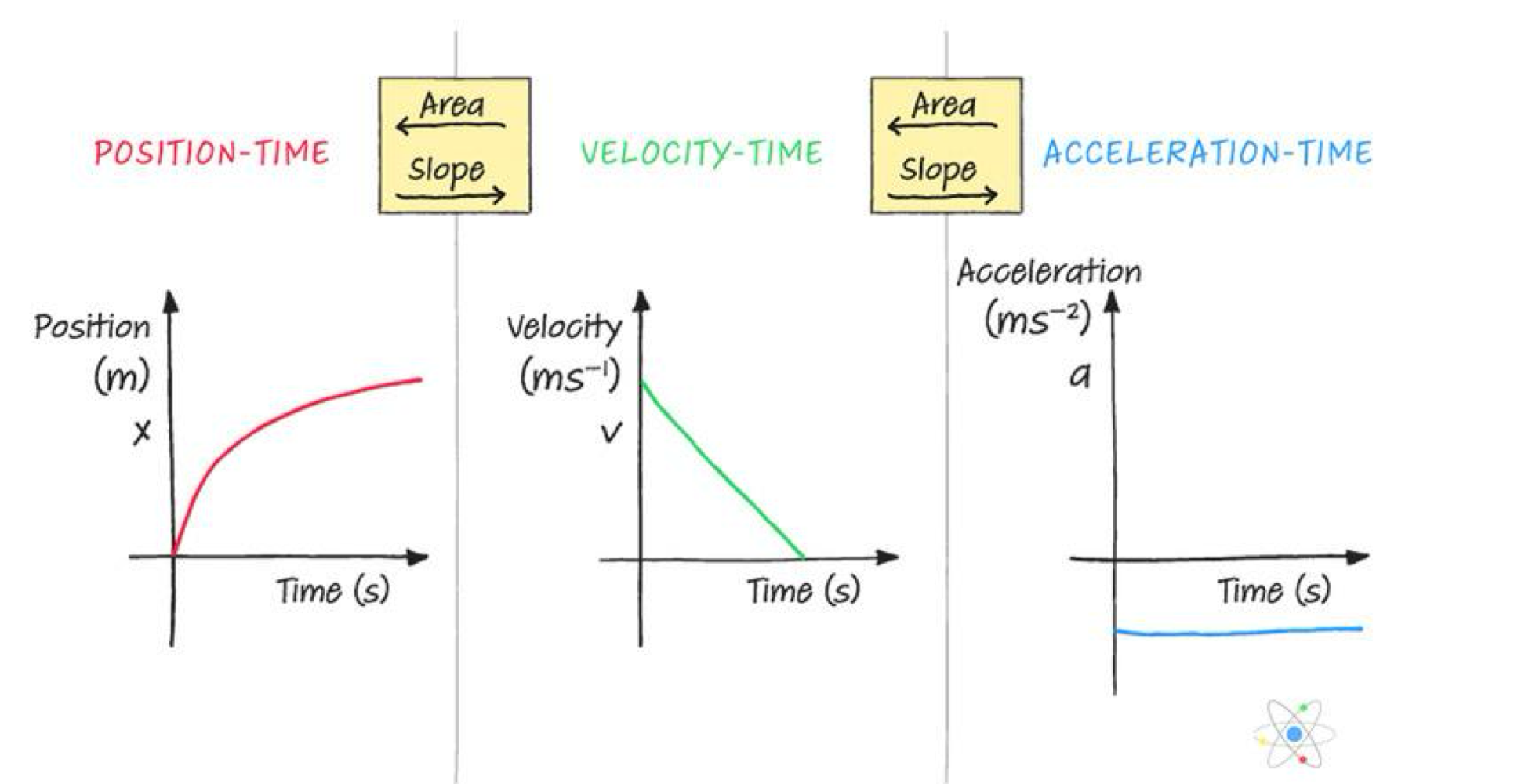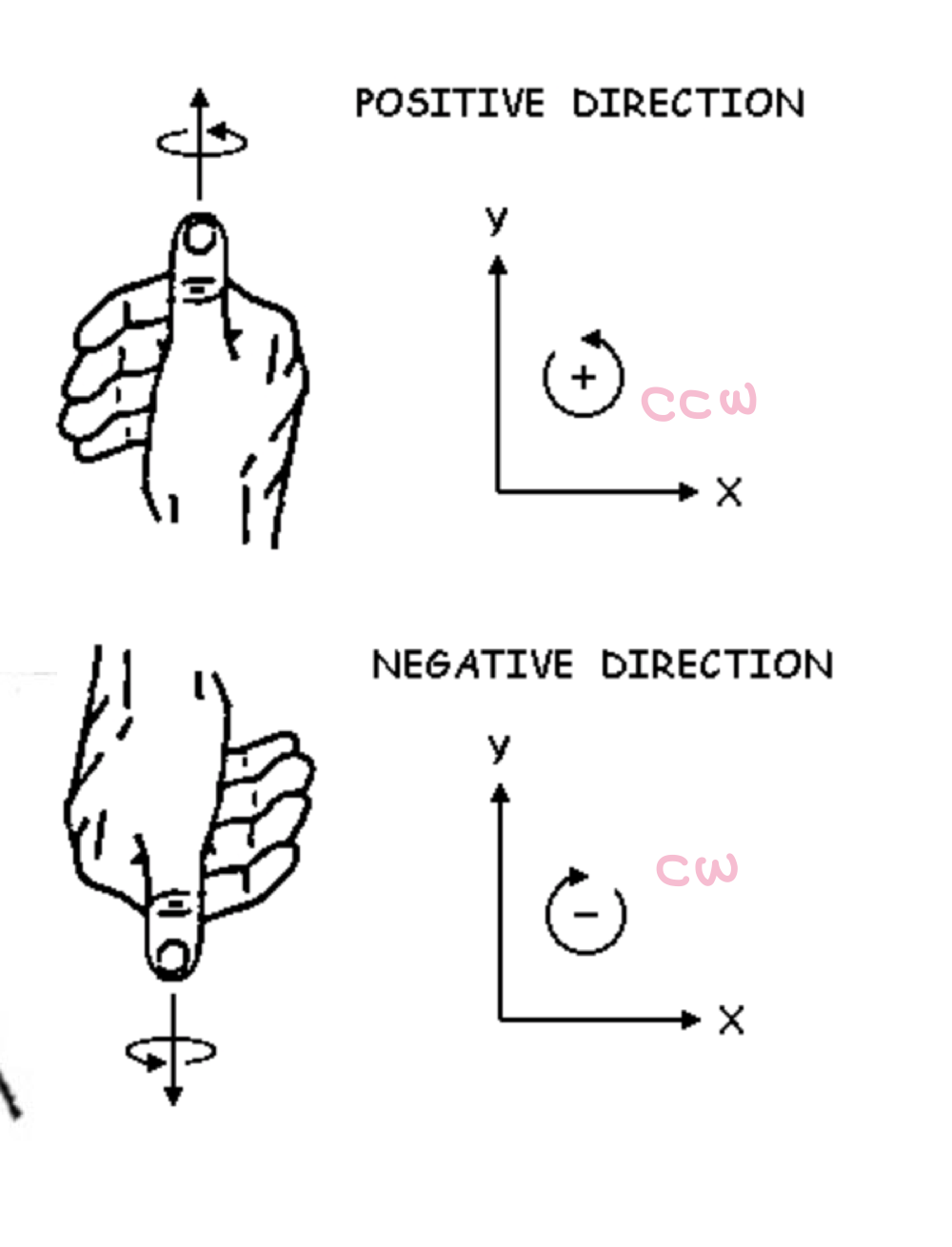Lecture 4 - Angular Kinematics 1
1/16
There's no tags or description
Looks like no tags are added yet.
Name | Mastery | Learn | Test | Matching | Spaced |
|---|
No study sessions yet.
17 Terms
Draw equivalent position-time, velocity-time, and acceleration-time graphs
Or inverse

Velocity is equal to the slope of the….
position-time curve
Acceleration is equal to the slope of the…
velocity-time curve
Position is equal to the area of the…
velocity-time curve
Velocity is equal to the area of the…
acceleration-time curve
Angular Kinematics
Study of angular/circular motion, describes the motion; measuring movement along a circular path about a line or fixed axis; body travels through same angle, in same direction, in same period of time.
Quantities similar to linear kinematics, but unit of measurement changes (radians and degrees)
Angular displacement, velocity, and acceleration
Angular Displacement (θ)
The angle through which a body has rotate about an axis
Size of a circle can change, angle will not
θ = s/r [radians]
![<p>The angle through which a body has rotate about an axis</p><ul><li><p>Size of a circle can change, angle will not</p></li><li><p>θ = s/r [radians]</p></li></ul><p></p>](https://knowt-user-attachments.s3.amazonaws.com/c22ccefd-4ecc-47ad-b9a7-1d60e1326505.png)
When r = arc length (s), θ = …
1 radian
If s < r →
θ < 1 radian
If s > r →
θ > 1 radian
Circle Circumference =
2πr = 360°
1 rad =
180/π = 57.3°
Final angular position must…
reflect number of rotations that occured
Every revolution =
360° or 2π radians
Angular Velocity
The rate of change of angular displacement
ω = (Δθ)/(Δt) = (θf - θi)/(Δt) [rad/s or °/s]
Direction determined by right hand rule
![<p>The rate of change of angular displacement</p><ul><li><p>ω = (Δθ)/(Δt) = (θ<sub>f</sub> - θ<sub>i</sub>)/(Δt) [rad/s or °/s]</p></li><li><p>Direction determined by right hand rule</p></li></ul><p></p>](https://knowt-user-attachments.s3.amazonaws.com/5727a835-1ee9-4f1e-b6d4-202211ce2eec.png)
Right Hand Rule
Used to determine direction of motion for angular quantities
Curl right hand about the rotating axis, ringers pointing in the direction of rotation; extending thumb points in the direction of the angular velocity

Angular Acceleration
The rate of change of angular velocity over time
𝛼avg = (Δω)/(Δt) = (ωf - ωi)/(Δt) [rad/s2 or °/s2]
Direction determined by right hand rule